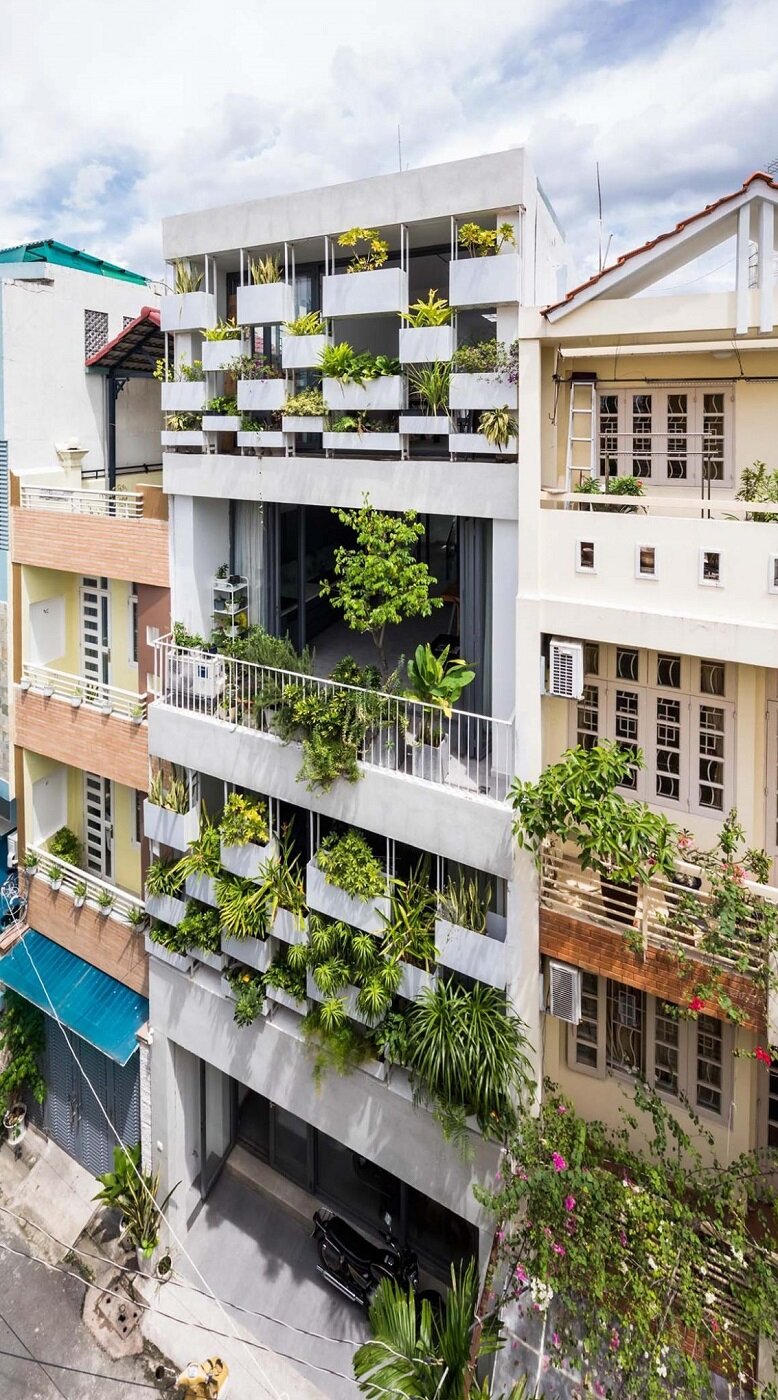#17781. Modern Vertical Garden Facade: Integrating Living Greenery into Urban Architecture

This impressive example of modern urban architecture demonstrates an innovative approach to facade design in a dense urban setting. The central building with its white facade stands out among neighboring structures thanks to its original "living facade" concept with integrated plant elements.
Compositionally, the facade is organized according to a modular system, where white rectangular plant containers create a rhythmic checkerboard pattern on the building's surface. This technique not only gives the building a unique aesthetic but also serves an important ecological function, improving the microclimate inside the premises and promoting biodiversity in the urban environment.
Particularly noteworthy is the central terrace with white railings and abundant greenery, which functions as a transitional zone between interior and exterior spaces. The facade is also characterized by large glazed openings that provide natural lighting to the interior spaces.
The contrast between the minimalist geometry of the concrete structure and the organic forms of plants creates a visually appealing and harmonious image. This technique can be adapted for a private house using vertical gardening and modular plant containers, which doesn't require significant expenses but substantially enriches the building's appearance and creates a unique microclimate around the home.